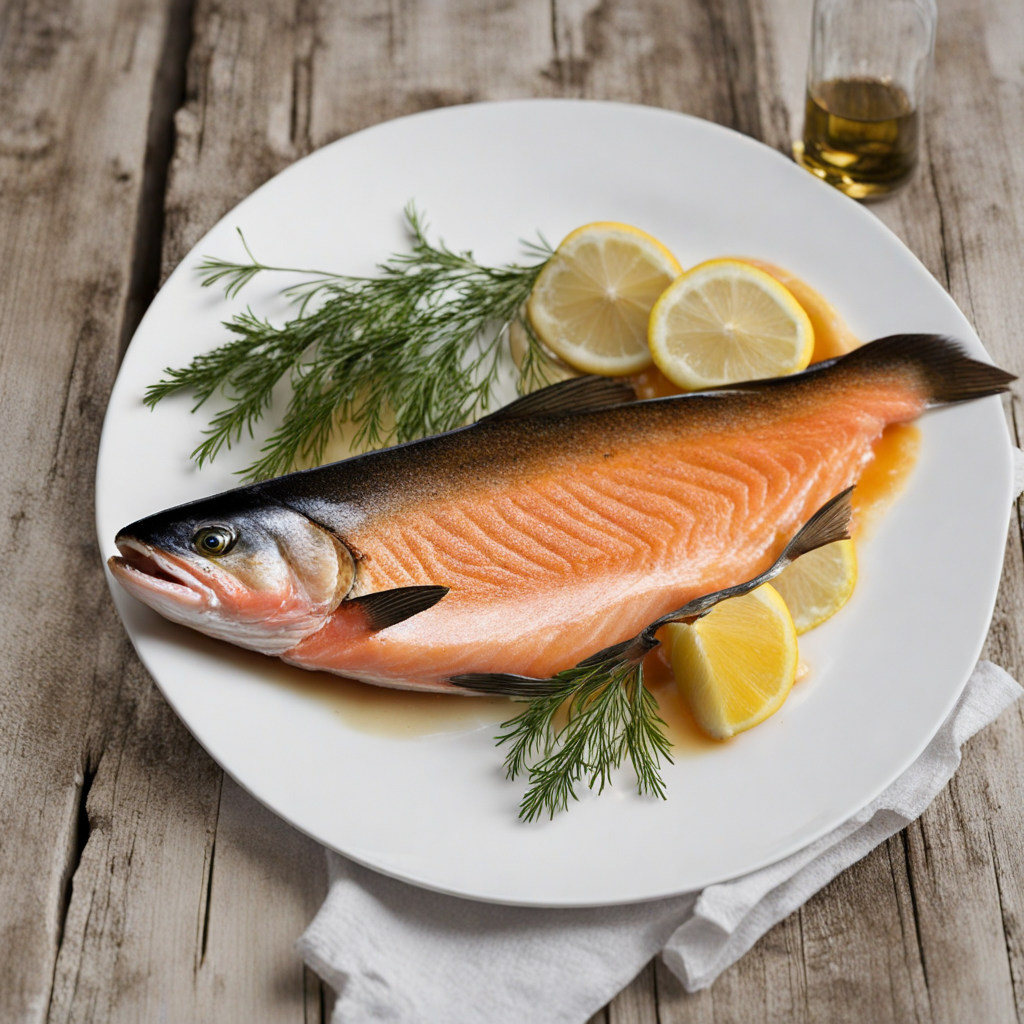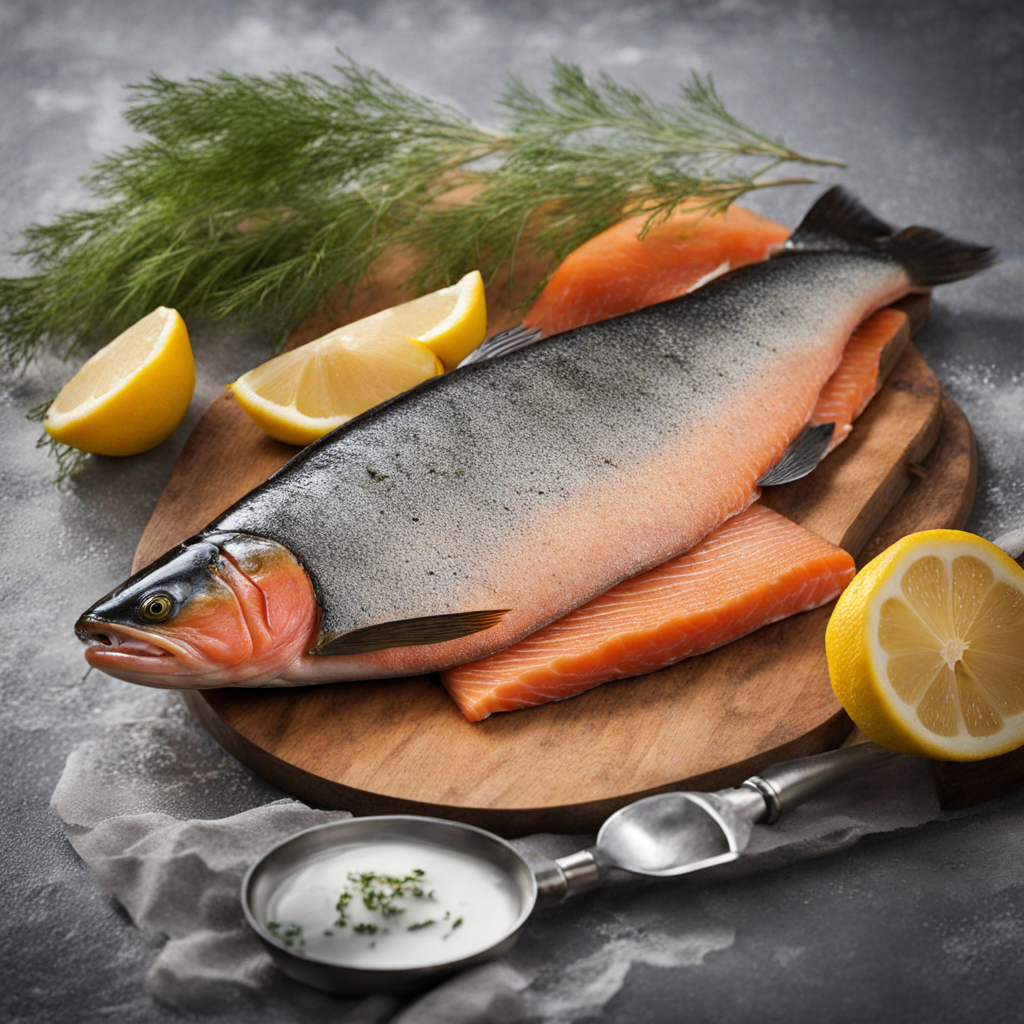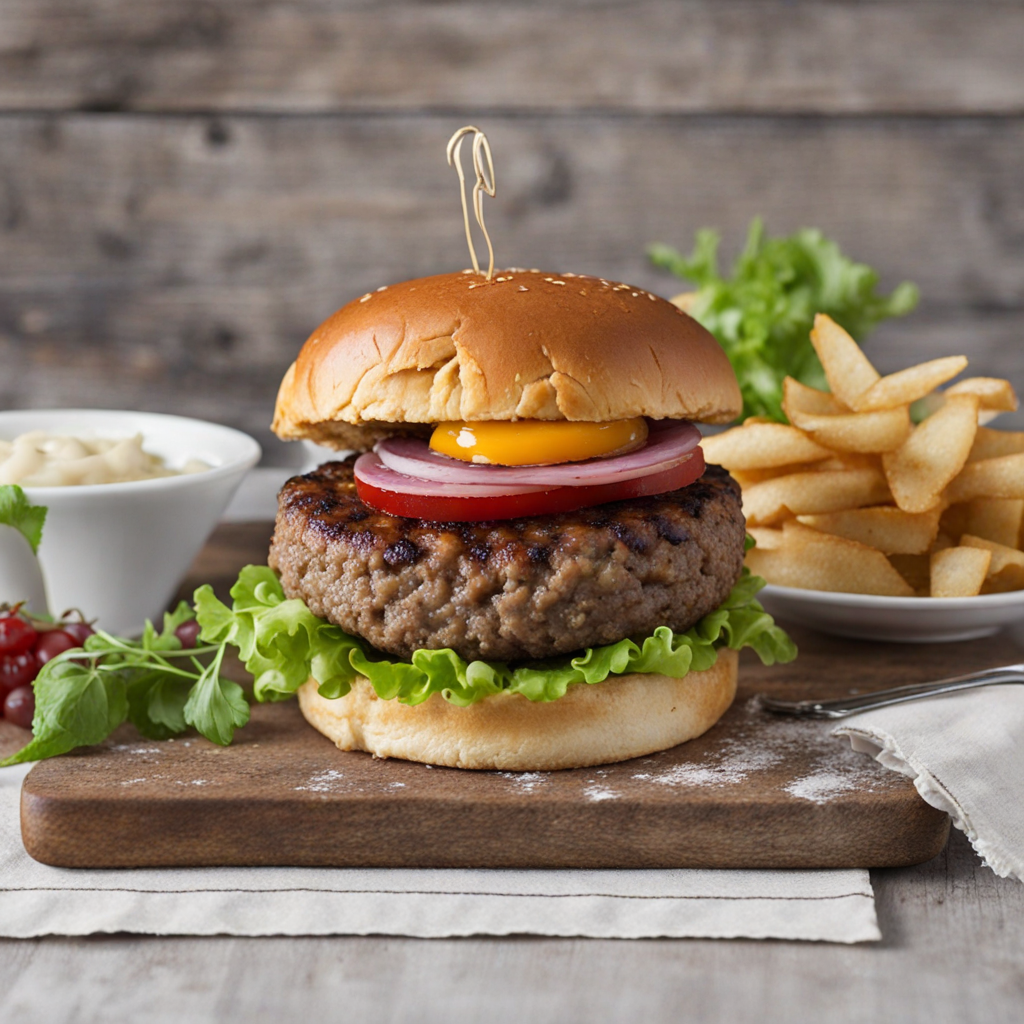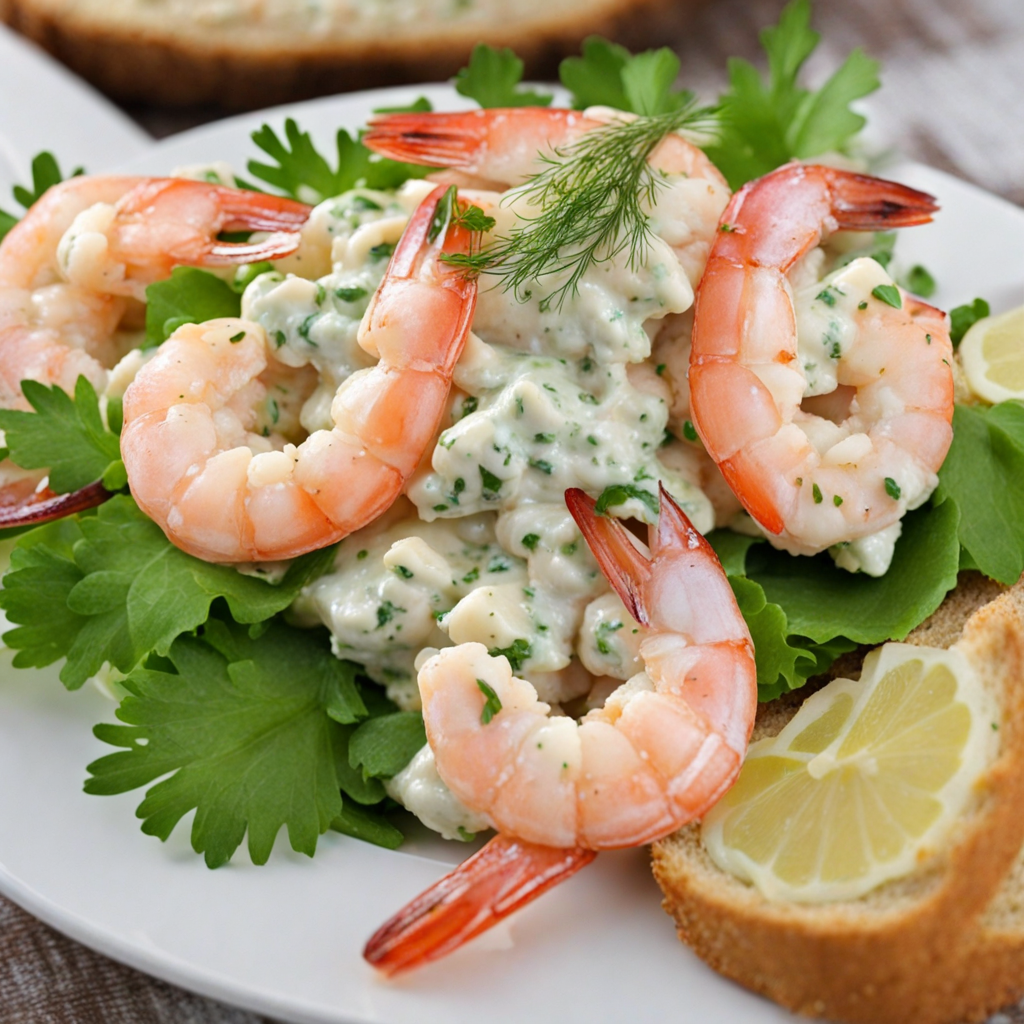Swedish Arctic Char
Swedish Arctic Char is a unique fish that embodies the pristine waters of Sweden, offering a flavor profile that is both delicate and rich. This cold-water fish is a close relative of both salmon and trout, and its vibrant hues range from a gentle pink to a deep orange, often with a marbled appearance. The flesh is tender and flaky, making it a versatile ingredient that can be prepared in various ways, including grilling, poaching, or smoking. The taste is mild yet distinctly sweet, often enhanced by the natural oils in the fish, which provide a buttery richness that lingers on the palate. One of the most delightful aspects of Arctic Char is its ability to absorb flavors, making it an excellent canvas for both traditional and innovative seasonings. It pairs beautifully with fresh herbs, citrus, and light marinades, allowing the natural taste of the fish to shine through. In Scandinavian cuisine, it is often served with accompaniments such as dill, lemon, and even pickled vegetables, which elevate its flavor while maintaining a balance that speaks to the simplicity and elegance of Nordic cooking. Whether enjoyed in a fine dining setting or prepared at home, Swedish Arctic Char offers a taste of the wild and unspoiled landscapes of Sweden. Its sustainable farming practices make it an environmentally conscious choice for seafood lovers. With its striking appearance and exquisite flavor, Arctic Char invites culinary exploration and appreciation, making it a must-try for anyone looking to delve into new and exciting tastes.
How It Became This Dish
Röding: A Journey Through Time and Taste in Sweden Röding, or Arctic char, is a fish that has woven itself into the cultural and culinary fabric of Sweden, embodying a rich history that spans generations. Known for its delicate flavor and striking coloration, röding is not only prized for its taste but also cherished for its deep-rooted significance in Swedish traditions and ecosystems. This exploration of röding will delve into its origins, cultural importance, and its evolution throughout the ages. #### Origins of Röding The Arctic char (Salvelinus alpinus), or röding in Swedish, thrives in the cold, clear waters of the Arctic and sub-Arctic regions, including the lakes and rivers of Sweden. Its geographic distribution is wide, found in parts of North America and Europe, but it is particularly associated with the Scandinavian Peninsula. The fish has evolved to adapt to various freshwater habitats, which has allowed it to become a staple in the diets of indigenous peoples and local communities. Historically, röding was a significant source of sustenance for the Sámi people, the indigenous inhabitants of Northern Sweden, Norway, Finland, and Russia. For centuries, they relied on the fish not only for nourishment but also as a cultural symbol, representing their deep connection to the land and the waters they inhabited. The Sámi utilized traditional fishing techniques, often employing nets and traps, to catch röding, which they would smoke or dry for preservation. #### Cultural Significance As Sweden transitioned through various historical periods, the significance of röding transformed alongside it. During the Middle Ages, the fish became increasingly popular among the nobility and wealthy merchants, who appreciated its delicate flavor and fine texture. The rise of röding in the culinary world coincided with Sweden's growing trade networks, which facilitated the exchange of food and culinary ideas across Europe. Röding is often associated with Swedish festivities and traditions, particularly in the northern regions where it is most abundant. In contemporary culture, röding is frequently featured in traditional Swedish dishes, especially during Midsummer and Christmas celebrations. Its preparation is often steeped in tradition, with methods that include smoking, poaching, or simply serving it raw as part of a fish platter. The fish's vibrant orange and red hues also add a visual appeal that enhances its presence on festive tables. In addition to its culinary significance, röding plays an essential role in Swedish fishing culture. The practice of fishing for röding is not only a means of sustenance but also a cherished pastime that fosters a sense of community and connection to nature. Many Swedish families partake in fishing trips, particularly during the summer months, when the clear lakes become prime fishing spots. This tradition reinforces the importance of sustainable fishing practices and the preservation of local ecosystems. #### Development Over Time The evolution of röding as a culinary staple reflects broader trends in Swedish cuisine and society. In the 18th and 19th centuries, as Sweden underwent industrialization, the fishing industry expanded, leading to increased availability of röding and other freshwater fish. This period saw the rise of fish markets and processing facilities, making röding more accessible to urban populations. The 20th century brought about significant changes in the way röding was harvested and consumed. With advances in aquaculture, röding began to be farmed in controlled environments, which alleviated some pressure on wild populations. Swedish aquaculture practices focus on sustainability, ensuring that fish stocks remain healthy while meeting the demand for this beloved species. As a result, röding is now available year-round, allowing chefs and home cooks alike to incorporate it into their culinary repertoires. In recent years, röding has gained international recognition, making its way onto the menus of fine dining establishments across the globe. Swedish chefs have embraced röding, showcasing its versatility in contemporary cuisine. Dishes may feature röding prepared in innovative ways, such as ceviche, grilled fillets, or served alongside seasonal vegetables. This modern interpretation maintains the essence of traditional Swedish cooking while appealing to a global audience. #### Röding in Modern Cuisine Today, röding is celebrated not only in Sweden but also as a gourmet ingredient in various international dishes. Chefs appreciate its rich flavor profile, which lends itself to a variety of culinary techniques. The fish can be paired with a range of ingredients, from fresh herbs to citrus, and is often accompanied by traditional Swedish accompaniments like lingonberry sauce or a creamy dill sauce. Röding has also become a symbol of the farm-to-table movement, as many restaurants emphasize sourcing local and sustainable ingredients. Diners are increasingly interested in knowing where their food comes from, and röding, with its sustainable farming practices, fits perfectly into this narrative. This emphasis on local ingredients has rekindled interest in Swedish culinary traditions, as chefs draw inspiration from the past while embracing modern techniques. Moreover, röding has found its way into the world of health-conscious dining. Rich in omega-3 fatty acids and protein, this fish is celebrated for its nutritional benefits. As consumers seek healthier alternatives to red meat, röding presents an appealing option that is both delicious and nutritious. #### Conclusion Röding is more than just a fish in Sweden; it is a culinary heritage that reflects the country’s history, culture, and connection to nature. From its origins as a staple for the Sámi people to its place on the tables of modern Swedes and international diners, röding embodies the evolution of food and tradition. As sustainable practices continue to shape its future, röding remains a symbol of Sweden's rich culinary landscape, inviting generations to enjoy its delicate flavors while honoring the traditions that have brought it to the forefront of Swedish cuisine. Whether enjoyed in a rustic cabin by a lake or plated elegantly in a Michelin-starred restaurant, röding continues to capture the essence of Sweden—its history, its culture, and its commitment to preserving a rich culinary heritage for years to come.
You may like
Discover local flavors from Sweden







